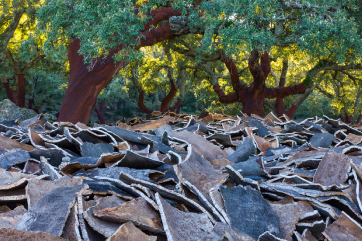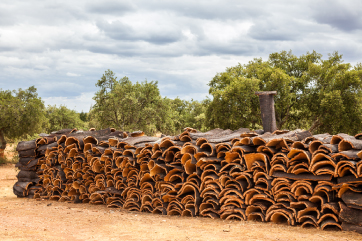
Cork Harvesting

The processing of cork starts with its’ harvest. Cork extraction is a skilled task done via machete, and a process that follows careful procedures, which are typically passed on from generation to generation among harvesting families. During summer months (May – August), when cork’s growth is at its’ apex, the harvesting occurs, with special care being made to the tree’s specific growth patterns.
The first harvesting occurs no sooner than after 25 years of growth, and is stipulated by the trees diameter reaching 27.5cm, and a height from ground level of 51.5cm. From this point onwards, the tree can be harvested every 9 years, with the process continuing for at least 150 years.
The first extraction provides irregular and tough cork and is known as ‘Virgin’ cork. This material is hard to work with and has limited applicable uses. Once removed, the tree is tagged with an extraction year, so the harvesters know when to go back to extract more cork (ie: 9 years later).
The second extraction (at 34 years of age) provides much more malleable cork, and has greater applicable uses than the Virgin material, but it is still not considered to be of the highest quality.
The third extraction (at 43 years) is when the cork has reached maturity, and it provides the highest quality level of cork. This material, known as ‘production cork’, will be what is extracted from the third harvest, onwards.

Once the cork is removed from the tree, and it goes through a period of rest and acclimation, allowing it to stabilize and mature, it then gets sorted.
- 1st and 2nd harvests (along with trimmed limbs and branches) – will be set aside for ‘non-stopper’ applications. This material has less ‘value’ (monetarily) than the ‘production cork’, but it is suitable for a wide variety of applications and production uses. This material can also be mixed with other materials to form composites.
- 3rd harvest (and beyond) – is typically set aside to produce cork stoppers, and other high-value production processes (such as the creation of veneers for decorative proposals and fabric). Cork stoppers have historically been the largest revenue generator for the production run cork raw material.

